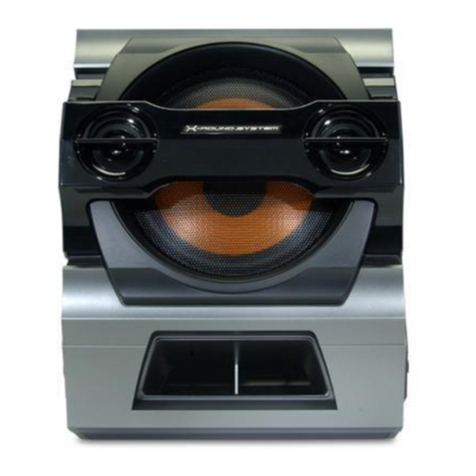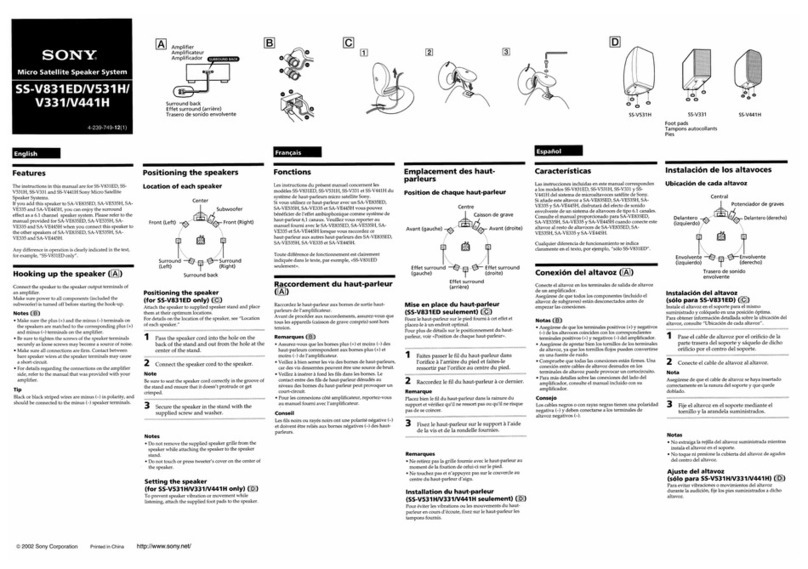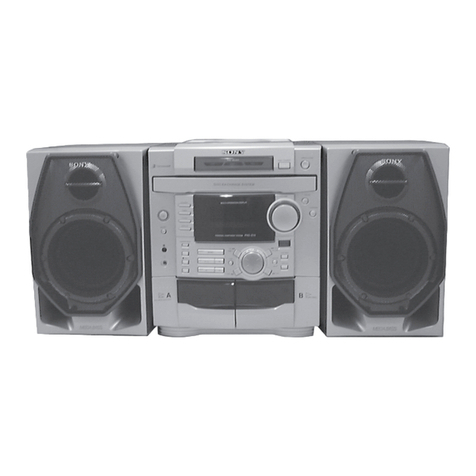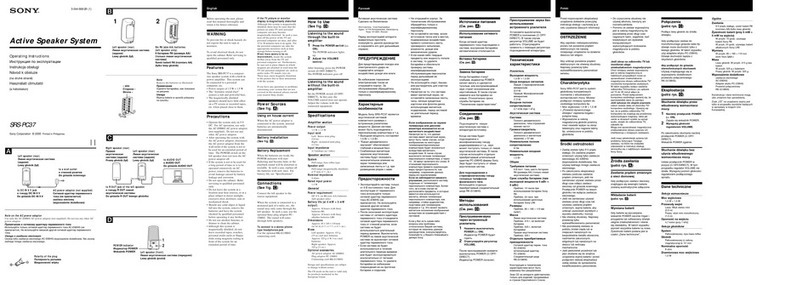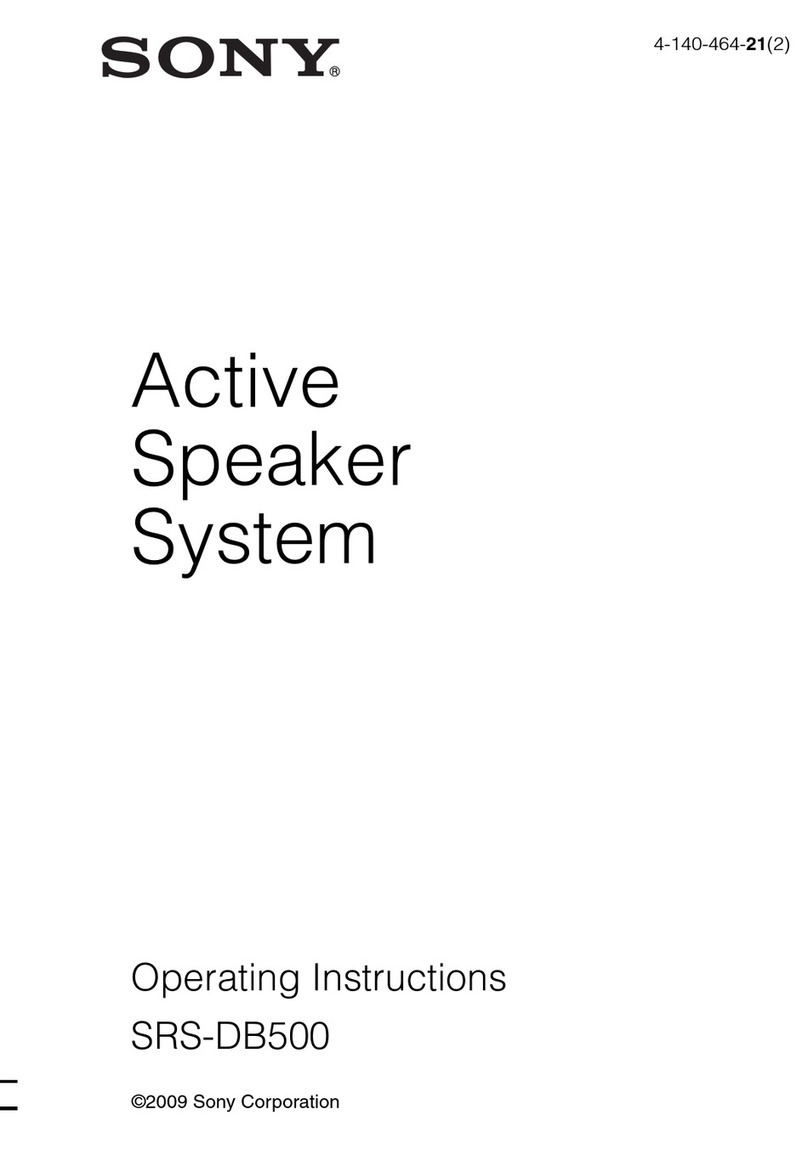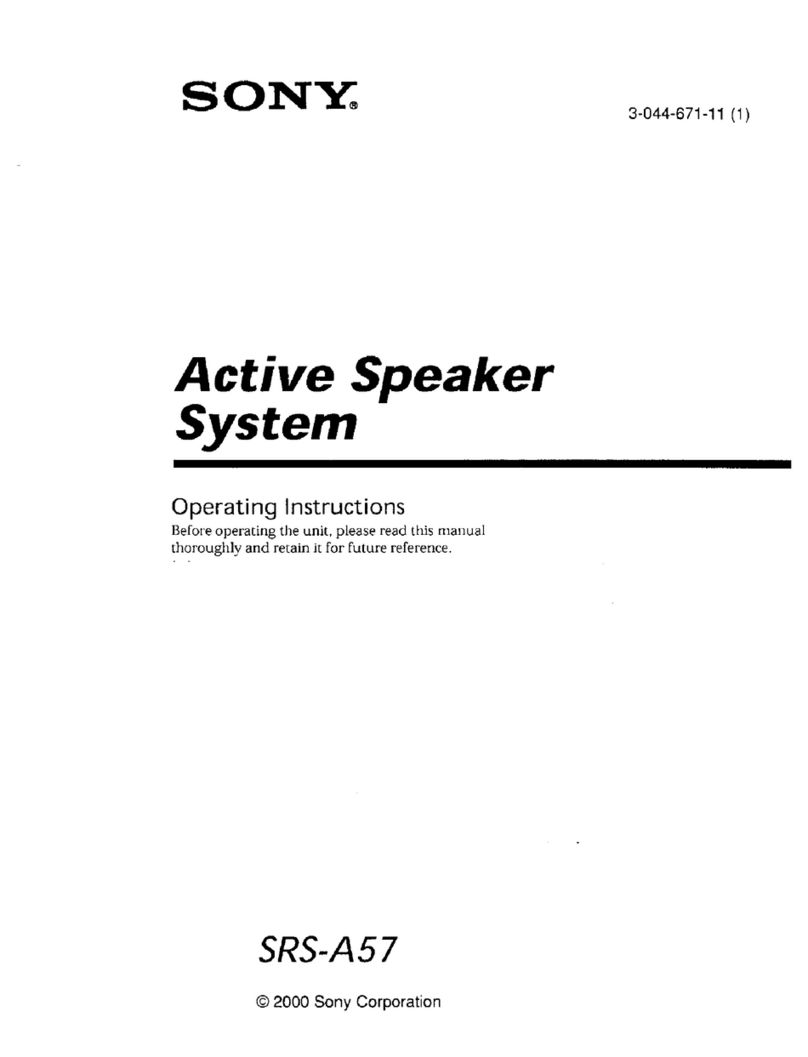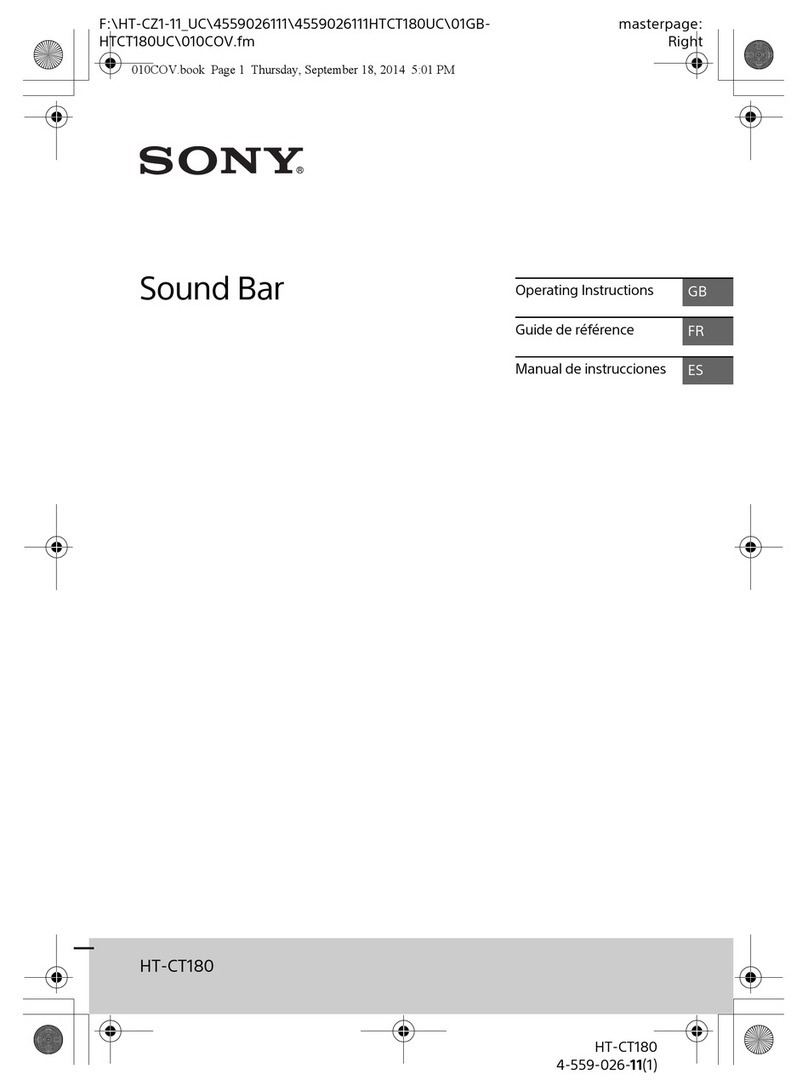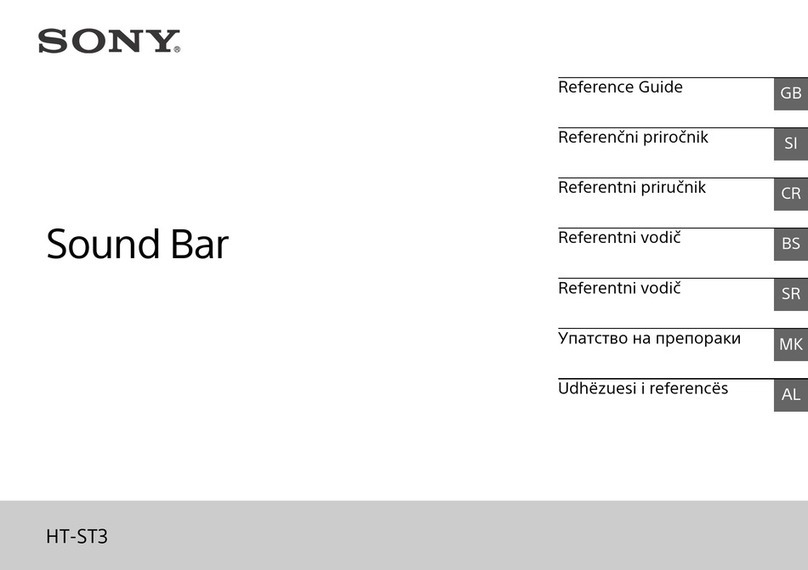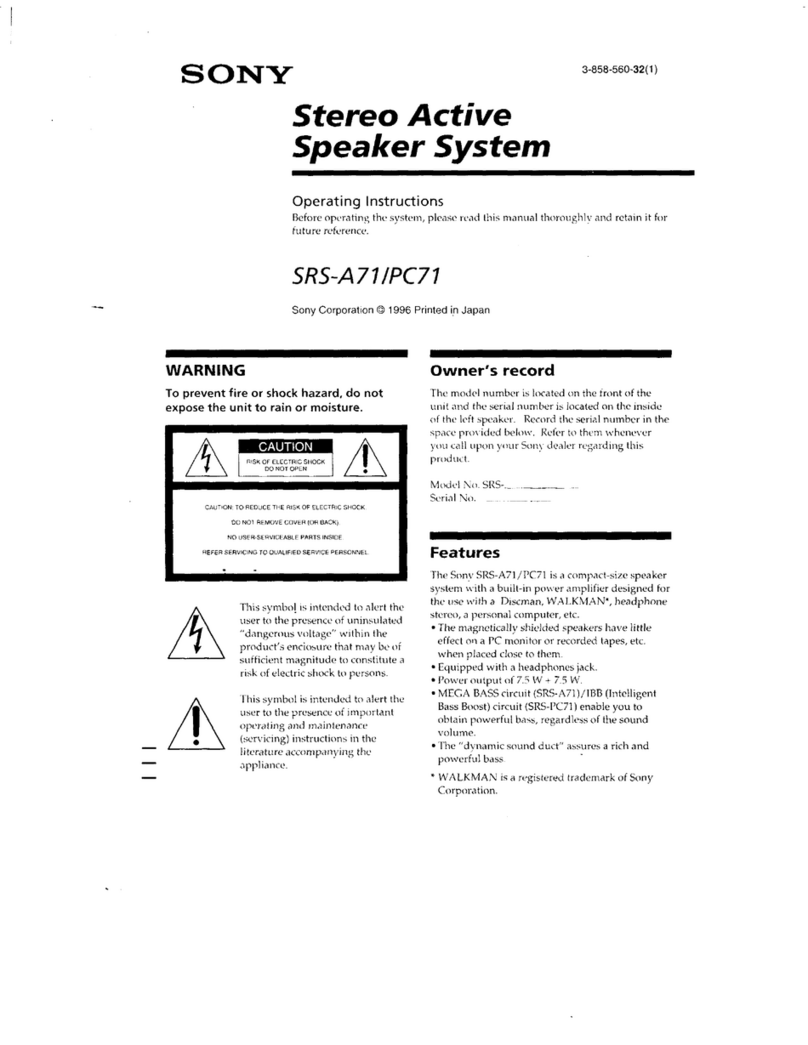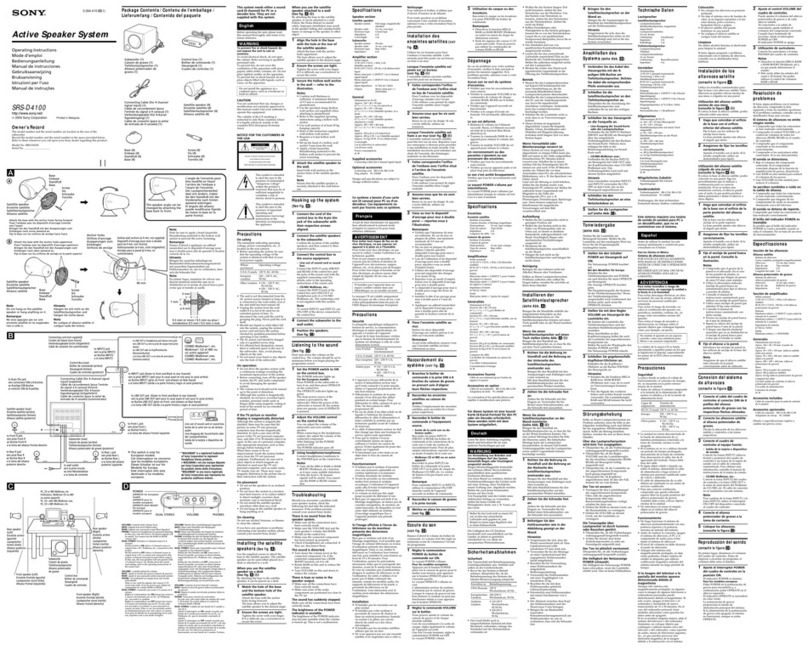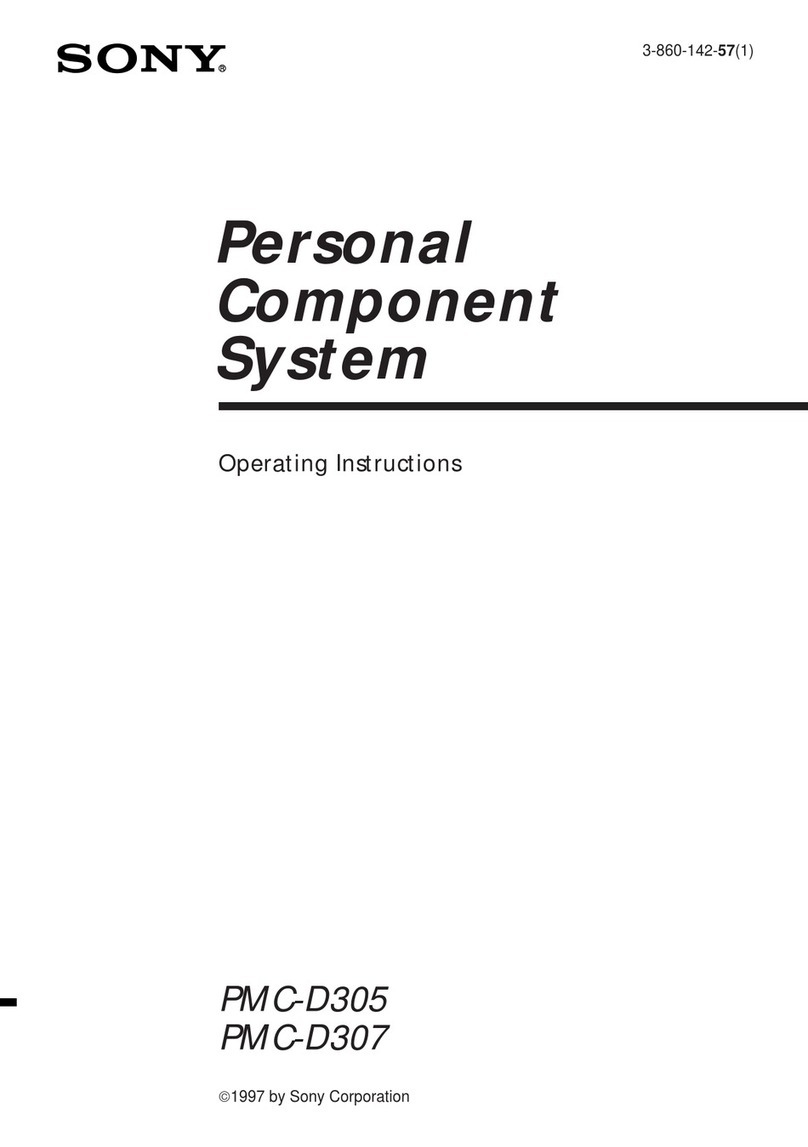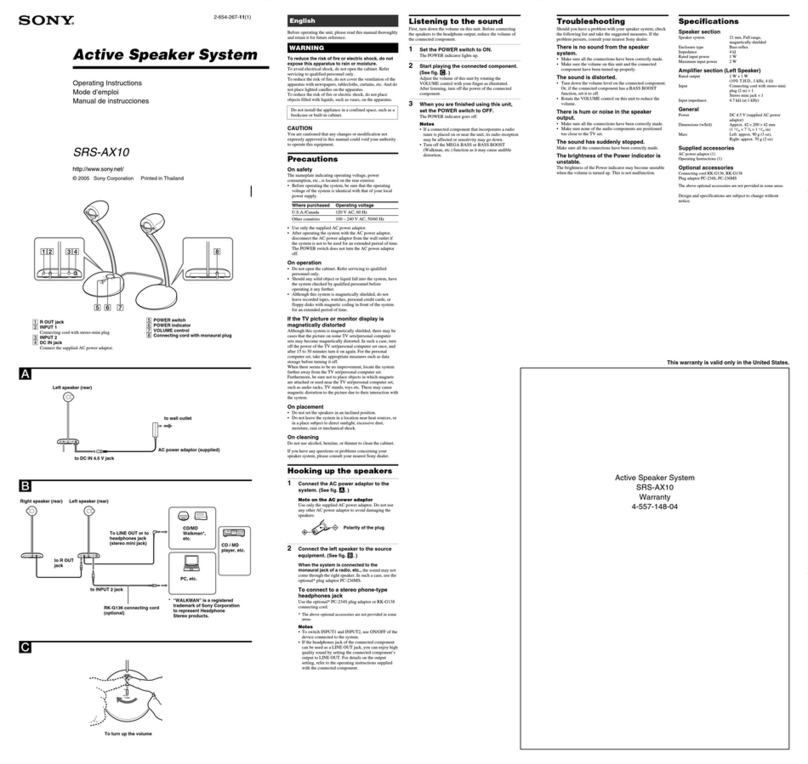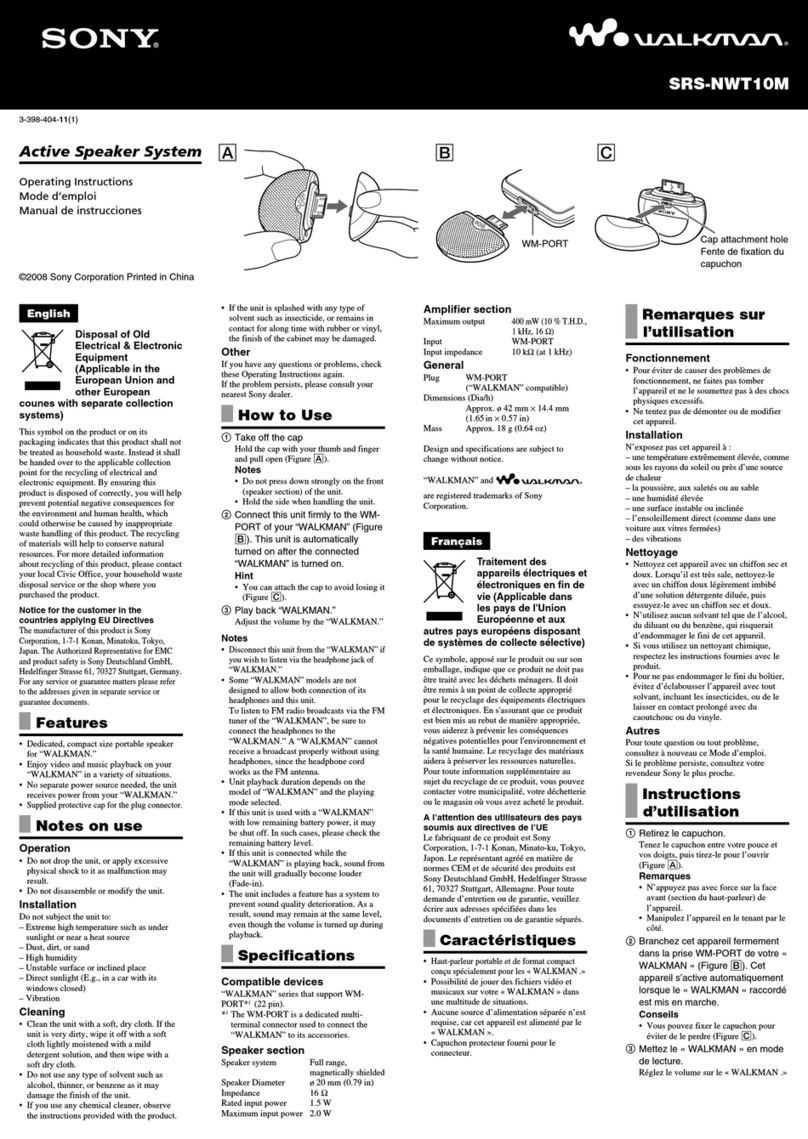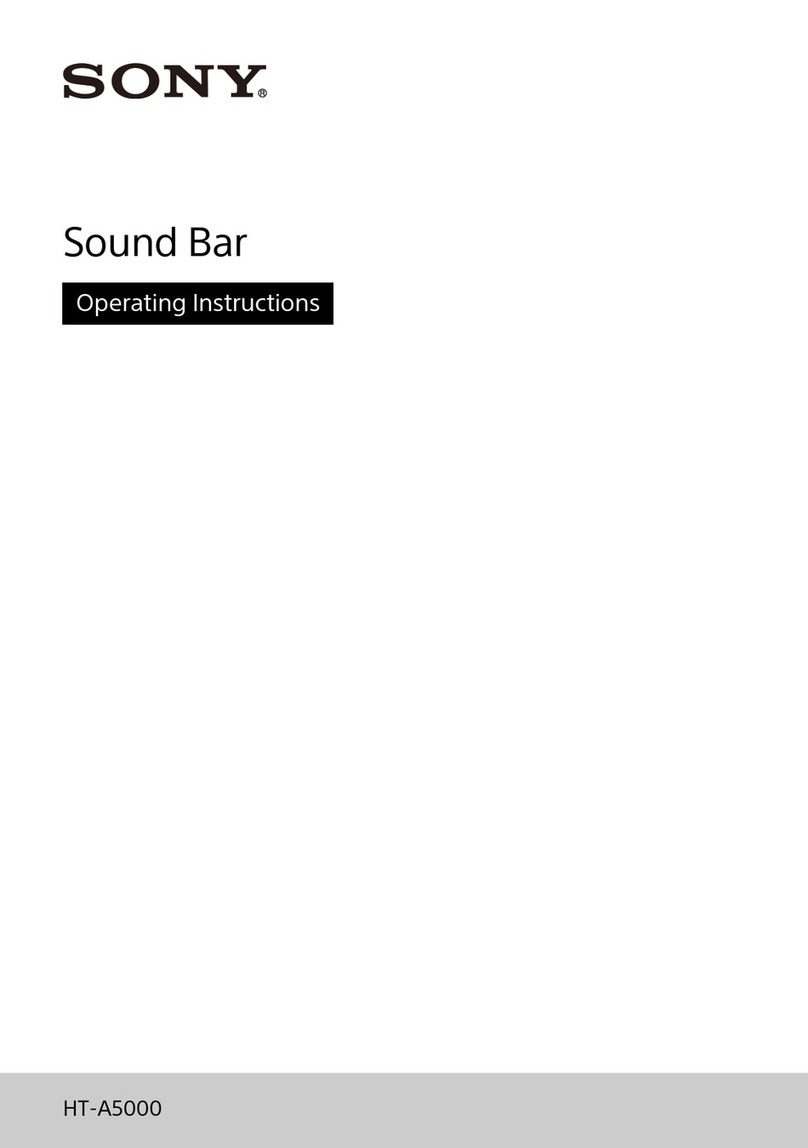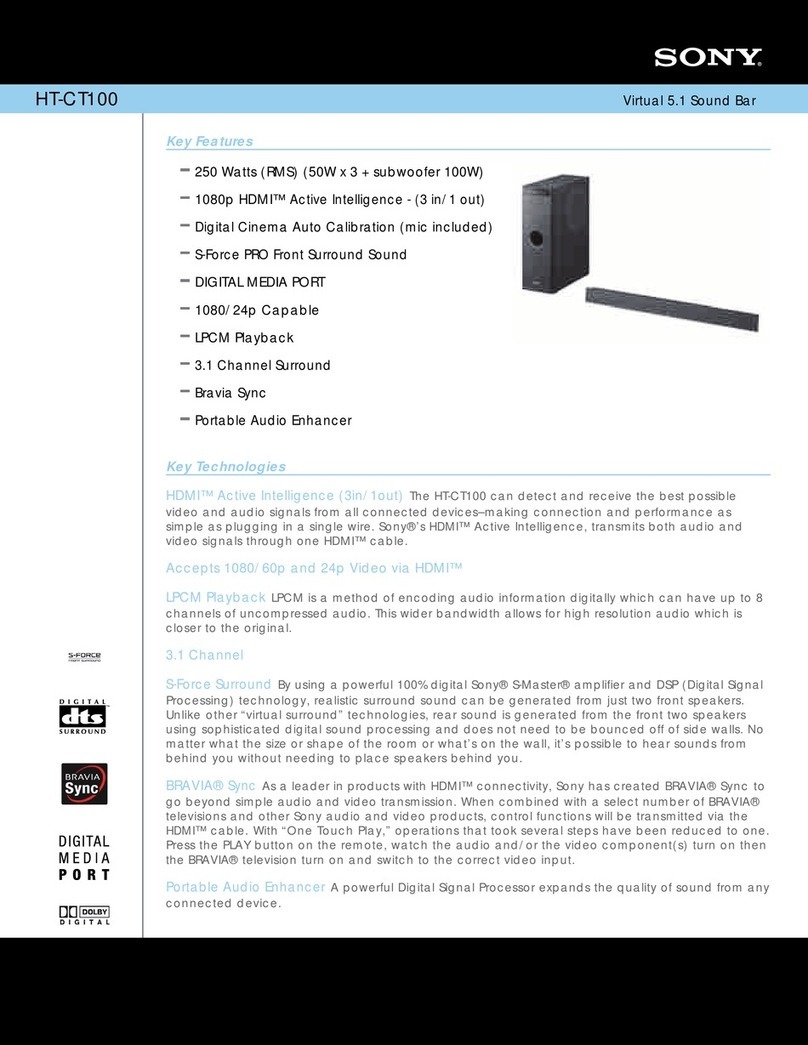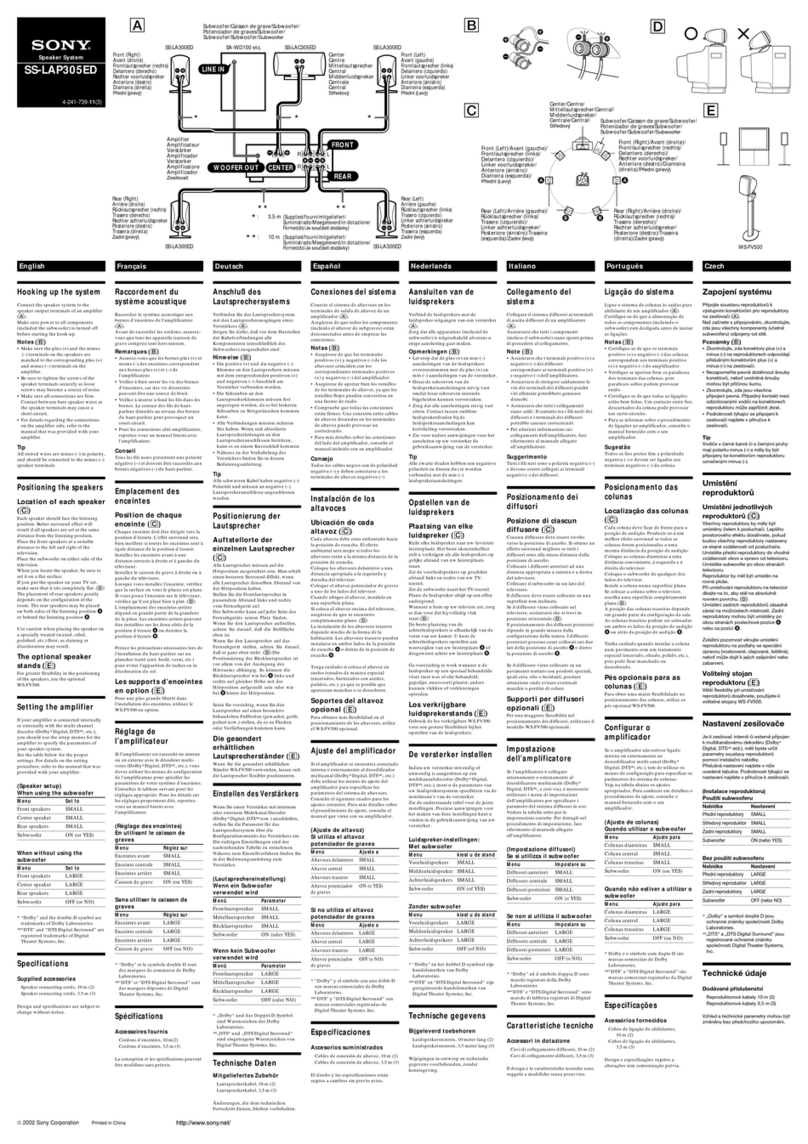
7US
This system incorporates Dolby* Digital and the DTS** Digital Surround
System.
* Manufactured under license from Dolby Laboratories.
Dolby, and the double-D symbol are trademarks of Dolby Laboratories.
** Manufactured under license under U.S. Patent Nos: 5,956,674;
5,974,380; 6,226,616; 6,487,535; 7,212,872; 7,333,929; 7,392,195;
7,272,567 & other U.S. and worldwide patents issued & pending. DTS-
HD, the Symbol, & DTS-HD and the Symbol together are registered
trademarks & DTS-HD Master Audio is a trademark of DTS, Inc.
Product includes software. © DTS, Inc. All Rights Reserved.
The BLUETOOTH®word mark and logos are registered trademarks owned
by Bluetooth SIG, Inc. and any use of such marks by Sony Corporation is
under license.
This system incorporates High-Definition Multimedia Interface (HDMI™)
technology.
The terms HDMI and HDMI High-Definition Multimedia Interface, and the
HDMI Logo are trademarks or registered trademarks of HDMI Licensing LLC
in the United States and other countries.
“BRAVIA” logo is a trademark of Sony Corporation.
“x.v.Color” and “x.v.Color” logo are trademarks of Sony Corporation.
The N Mark is a trademark or registered trademark of NFC Forum, Inc. in the
United States and in other countries.
Android is a trademark of Google Inc.
© 2012 CSR plc and its group companies.
The aptX® mark and the aptX logo are trade marks of CSR plc or one of its
group companies and may be registered in one or more jurisdictions.
Other trademarks and trade names are those of their respective owners.
BLUETOOTH wireless technology
Supported BLUETOOTH version and profiles
Profile refers to a standard set of capabilities for various BLUETOOTH
product capabilities. See “Specifications” (page 15) on the BLUETOOTH
version and profiles supported by this system.
For you to use the BLUETOOTH function, the BLUETOOTH device to be
connected must support the same profile as this system. Even if the
device supports the same profile, the functions may differ because of the
specifications of the BLUETOOTH device.
The audio playback on this system may be delayed from that on the
BLUETOOTH device because of the characteristics of the BLUETOOTH
wireless technology.
Effective communication range
BLUETOOTH devices should be used within approximately 10 meters
(33 feet) (unobstructed distance) of each other. The effective
communication range may become shorter under the following
conditions.
When a person, metal object, wall or other obstruction is between
the devices with a BLUETOOTH connection
Locations where a wireless LAN is installed
Around microwave ovens that are in use
Locations where other electromagnetic waves occur
Effects of other devices
BLUETOOTH devices and wireless LAN (IEEE 802.11b/g) use the same
frequency band (2.4 GHz). When using your BLUETOOTH device near a
device with wireless LAN capability, electromagnetic interference may
occur.
This could result in lower data transfer rates, noise, or inability to
connect. If this happens, try the following remedies:
Try connecting this system and BLUETOOTH mobile phone or
BLUETOOTH device when you are at least 10 meters (33 feet) away
from the wireless LAN equipment.
Copyrights
Notes

